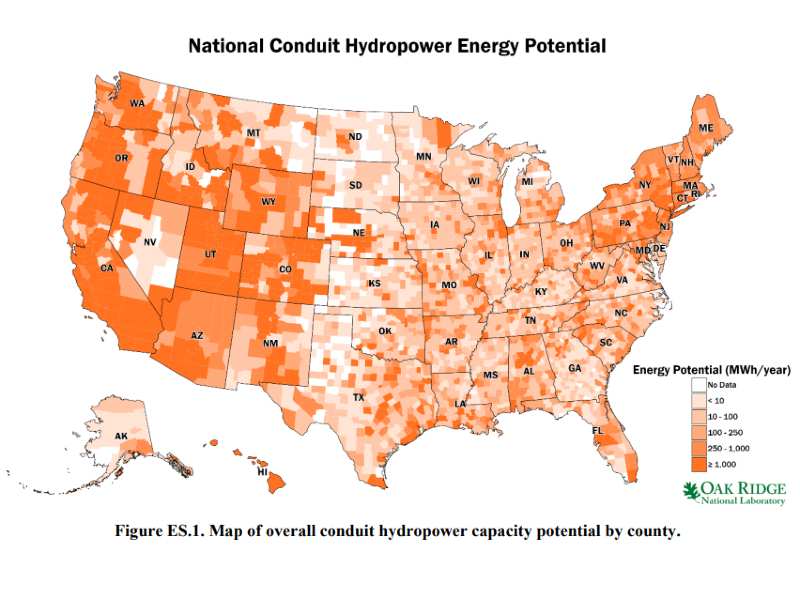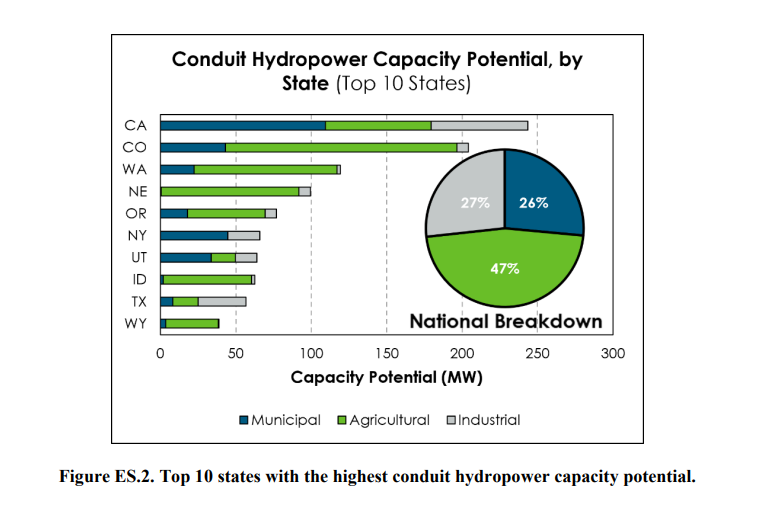 Image: Oak Ridge National Laboratory
Image: Oak Ridge National Laboratory
Conduit hydropower, which uses water from structures such as water supply pipelines and irrigation canals, has the potential to add 1.41GW of electricity to the US power grid.
This was found in a unique analysis performed by the US Department of Energy’s Oak Ridge National Laboratory (ORNL). The study looks at how to use existing hydro infrastructure to harvest otherwise wasted energy.
To harness conduit hydropower, existing tunnels, canals, pipelines and aqueducts, etc. that carry water are fitted with power generating equipment.
The water channel must have sufficient water flow and hydraulic head to be utilised and according to ONRL researchers, there are millions of kilometres of pipelines and conduits available for use.
More importantly, these resources can be tapped with minimal environmental impact and streamlined permitting processes.
More than 350 conduit hydropower projects have been permitted or constructed to date, and this is just the beginning according to Shih-Chieh Kao, water power programme manager at ORNL.
“You can think of conduit hydropower as low-hanging fruit, and what has been started is a mere drop in the bucket,” said Kao in a statement. “For all its benefits, the biggest barrier is a general lack of awareness of conduit hydropower’s potential.”
The research suggests that the potential for conduit hydropower is the highest in five Western states — California, Colorado, Washington, Nebraska and Oregon.
 Image credit ONRL
Image credit ONRL
Agricultural conduits such as ditches and channels for crop irrigation showed the greatest potential for hydropower, with the highest agricultural conduit potential seen in Colorado, Washington, Nebraska, California, Oregon and Idaho.
In terms of drinking water supply and wastewater systems in the municipal sector, conduit hydropower potential was highest in California, which had twice that of the next-highest state, New York.
Opportunities for conduit hydropower from industrial conduits, such as industrial pipelines or canals used at thermoelectric generating facilities, were present mostly in California, Texas, Missouri, New York and Maryland.
“These assessments open the door across multiple business sectors to what is possible,” said Kao. “By further understanding the costs and benefits of conduit hydropower, decision makers can leverage what is already available and deliver on the promise of more renewable energy.”

